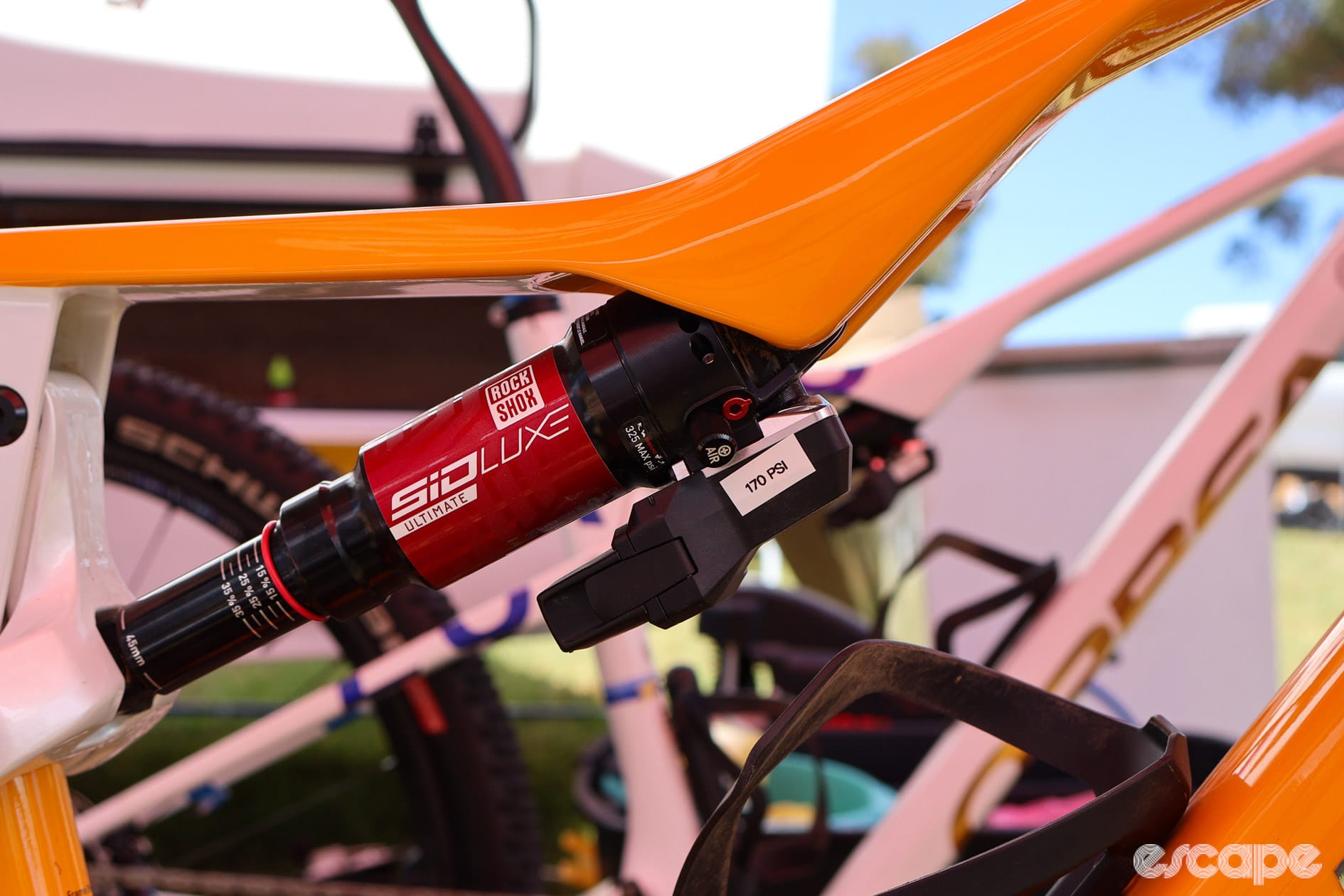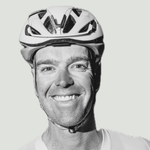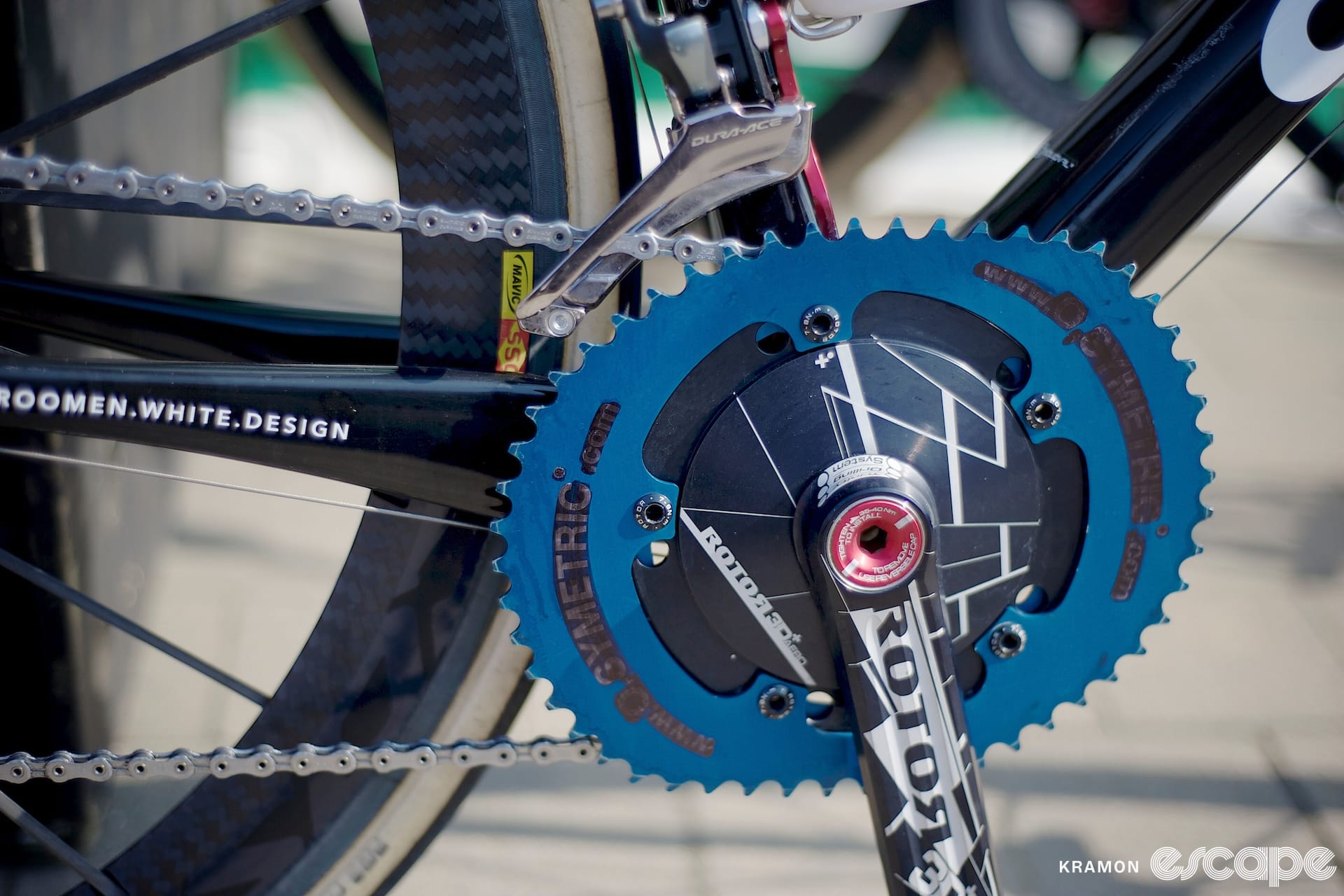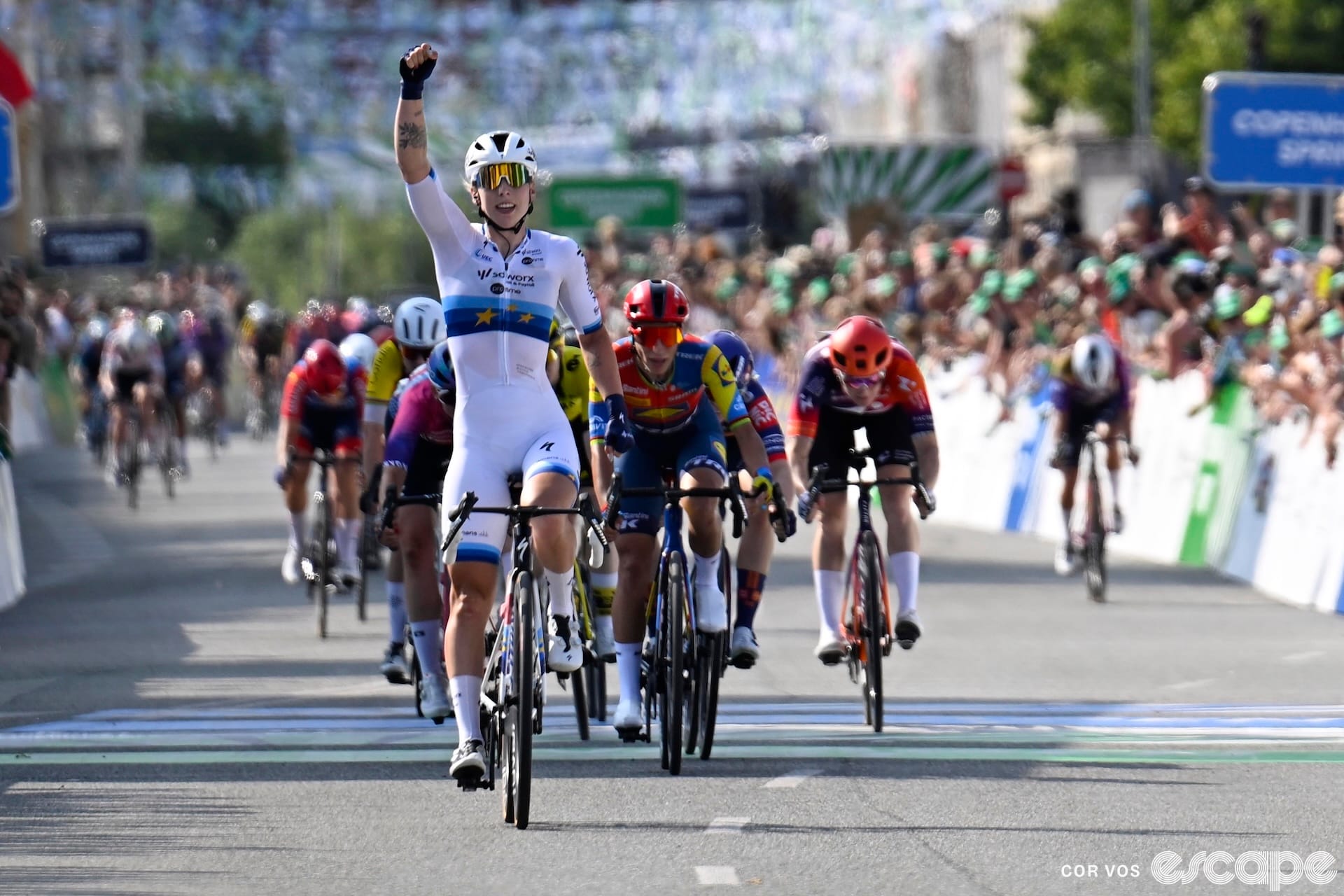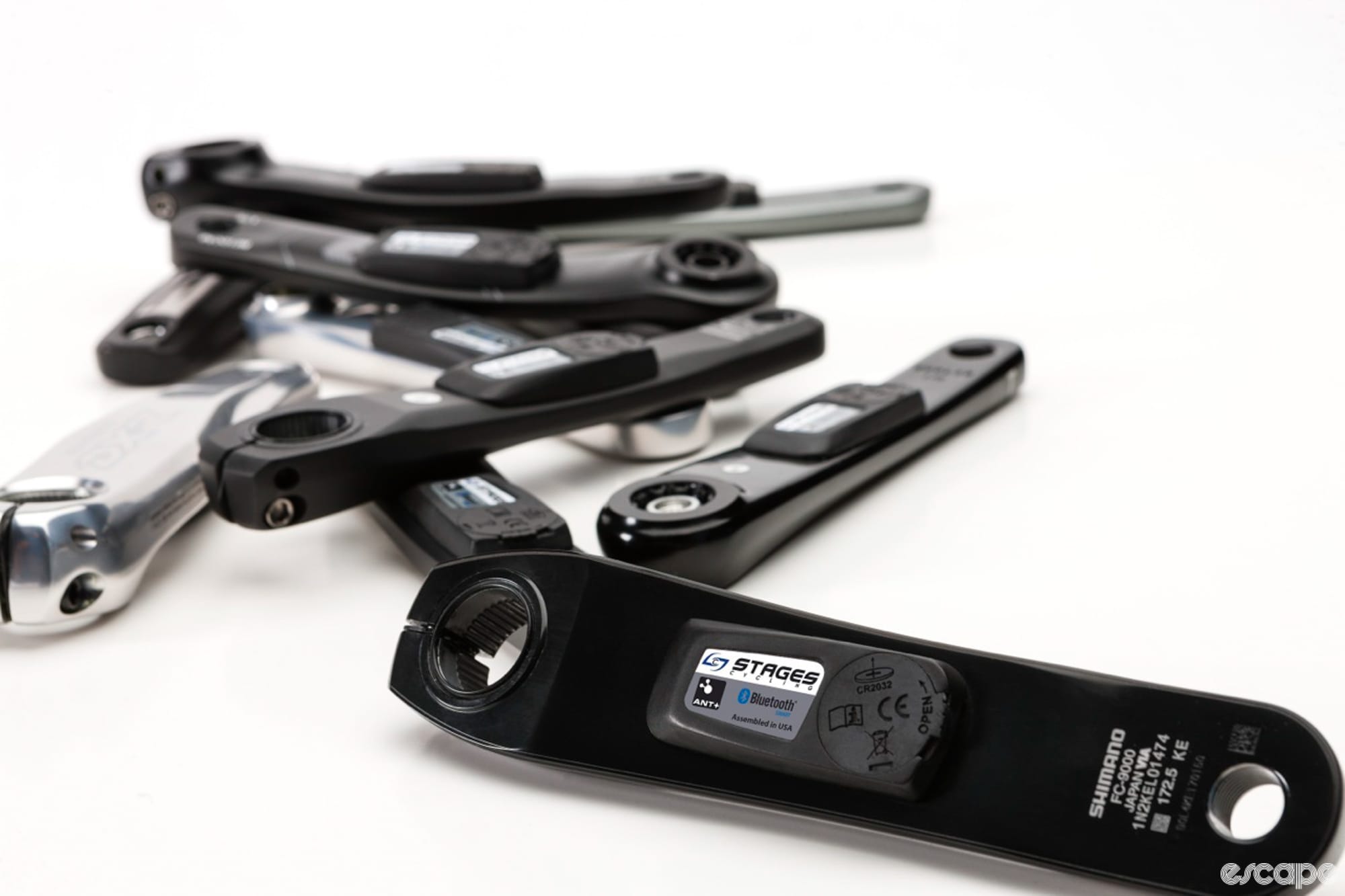The Cape Epic is the world’s premier Mountain Bike stage race. The Tour de France of MTB some call it, although that scarcely explains what it entails. 8 Days, 600 km and 15,000m of climbing need to be conquered by body and bike, and few of those kilometers are easily ridden. All of this must be done in temperatures touching 50 Degrees Celsius at times, and on some of the most unforgiving terrain going. Of the 1,484 riders (742 teams) who started the race, only 1,223 finished. And within that figure includes 159 who finished without their team mate and so aren’t officially in the placings.
Riders prepare for months, and their bike setups are meticulous. A poor tyre choice can cost you the race, the wrong suspension pressure can batter a body that is already on the limit, and the wrong gear choice can leave you walking a climb or losing the draft on a flat. Every choice is deeply considered, and seeing the bikes one by one was interesting as much for their individuality as for the common trends emerging through the bunch.
Wide tyres were everywhere
Thin, light tyres were common (1.95 S-Works Renegade anyone) in years past, Thankfully that time has passed, and more sensible and enjoyable options are chosen. This year, I didn’t see a single tyre below 2.35 width, whether on pro bikes or those of the vast amateur field. Ultimately in the pro field, sponsor commitments mean choice is limited, but no riders chose narrower than the maximum width available to them in their preferred tread pattern.
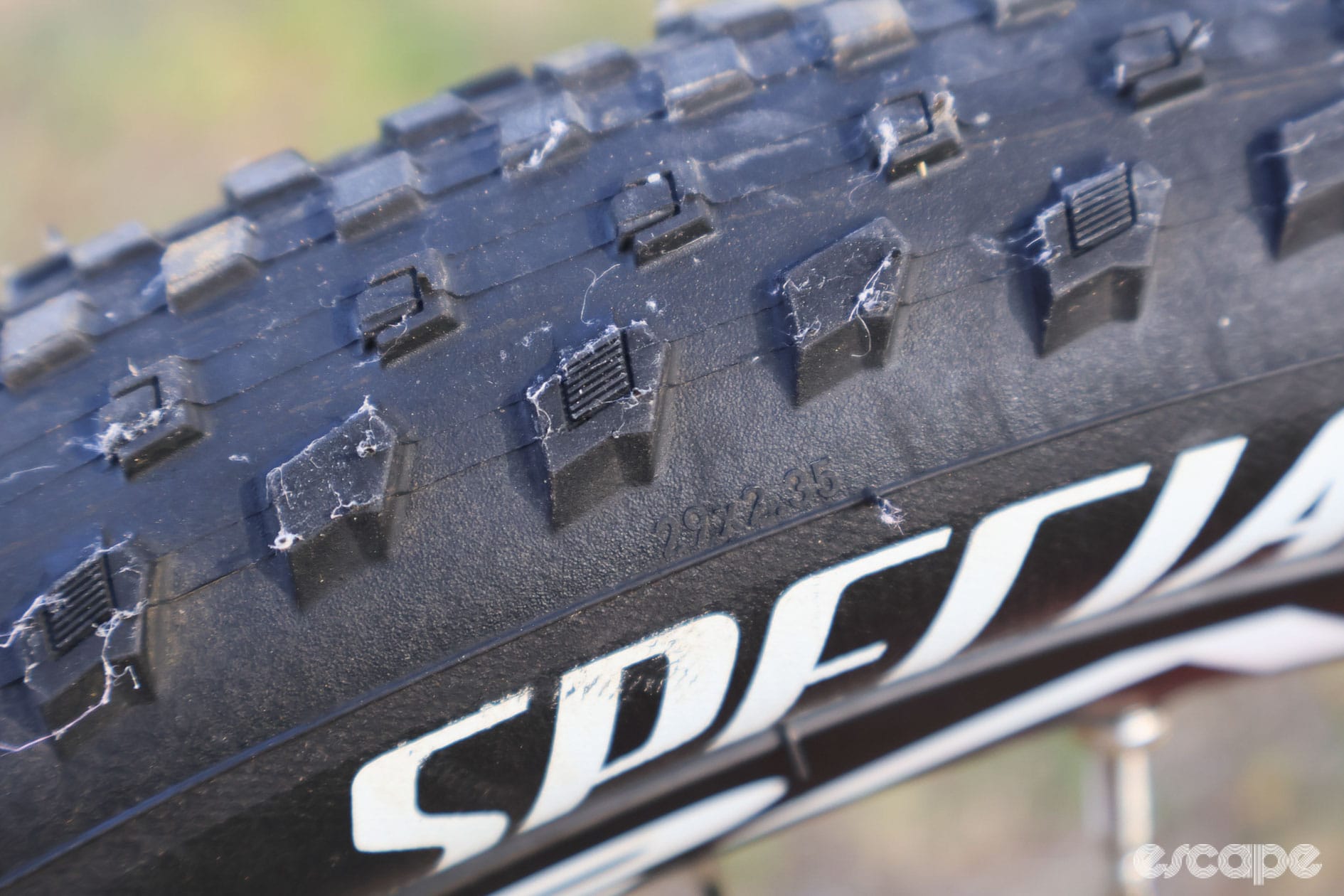
The Cape is loose and dusty, and riders respected that. Tread choices were as fast as you’d expect, no Down Country tyres here, but few riders chose the absolute slickest tyre available to them, either. Those who did kept it isolated to the rear wheel. Mixed front-rear combinations were few, too, but more common than I have seen in a few years. Wilier-Vittoria mixed the 2.4 Vittoria Peyote on the rear with an unbranded and unreleased 2.4 Vittoria Mezcal up front, as an example.
The most common tyres I saw were Maxxis Aspen 2.4, Vittoria Peyote 2.4, Schwalbe Racing Ray and Racing Ralph 2.35, and Pirelli Scorpion XC RC 2.4. Specialized only had a few of its riders in the pro bunch, but Matt Beers rode the pre-existing Renegade Grid 2.35 on the back and the new Air Trak on the front. In the women’s, Annika Langvad and Sofia Gomez Villafane were willing to trust the Air Trak both front and rear. In my opinion, Matt Beers’ choice tells a story for heavier rider choices.
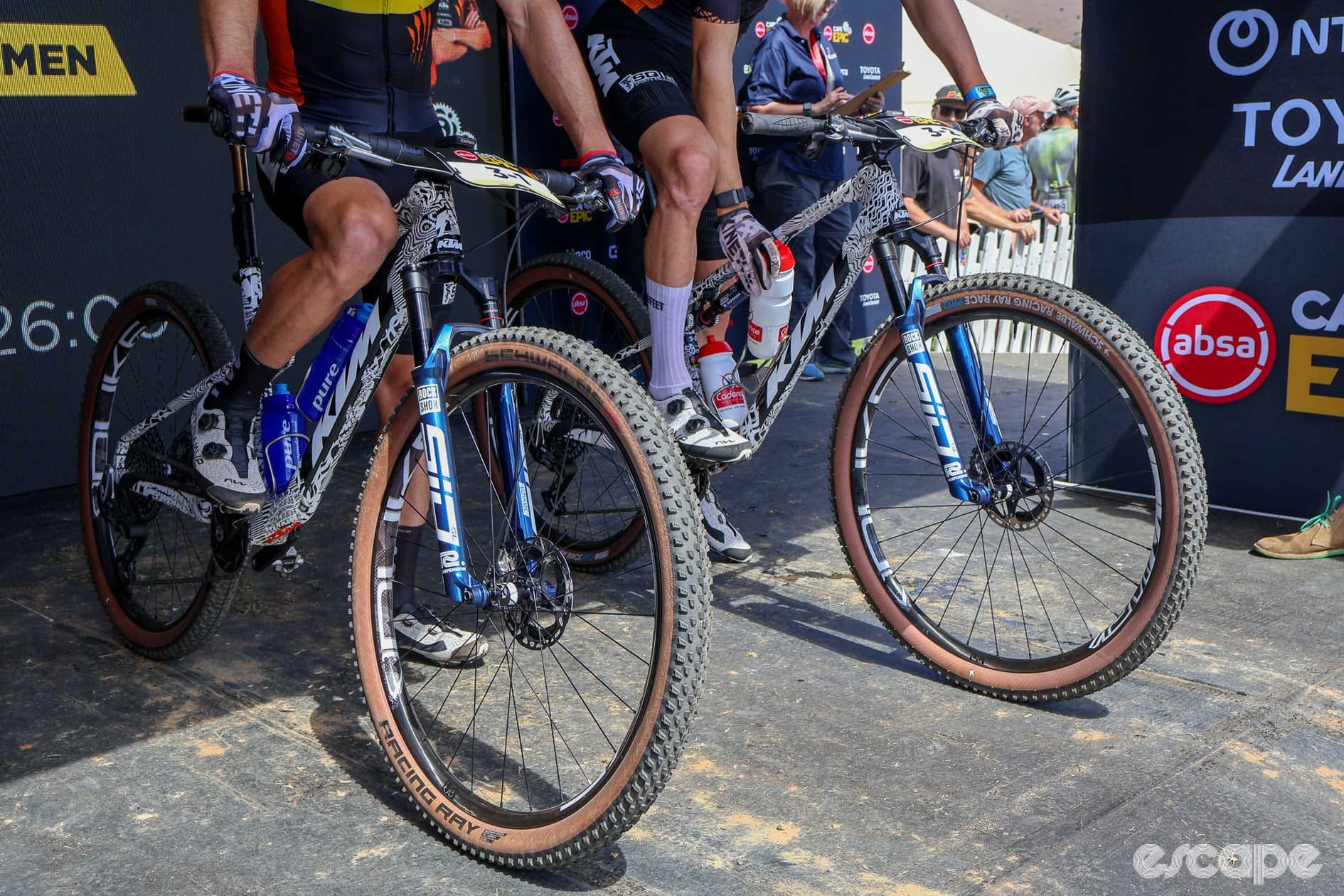
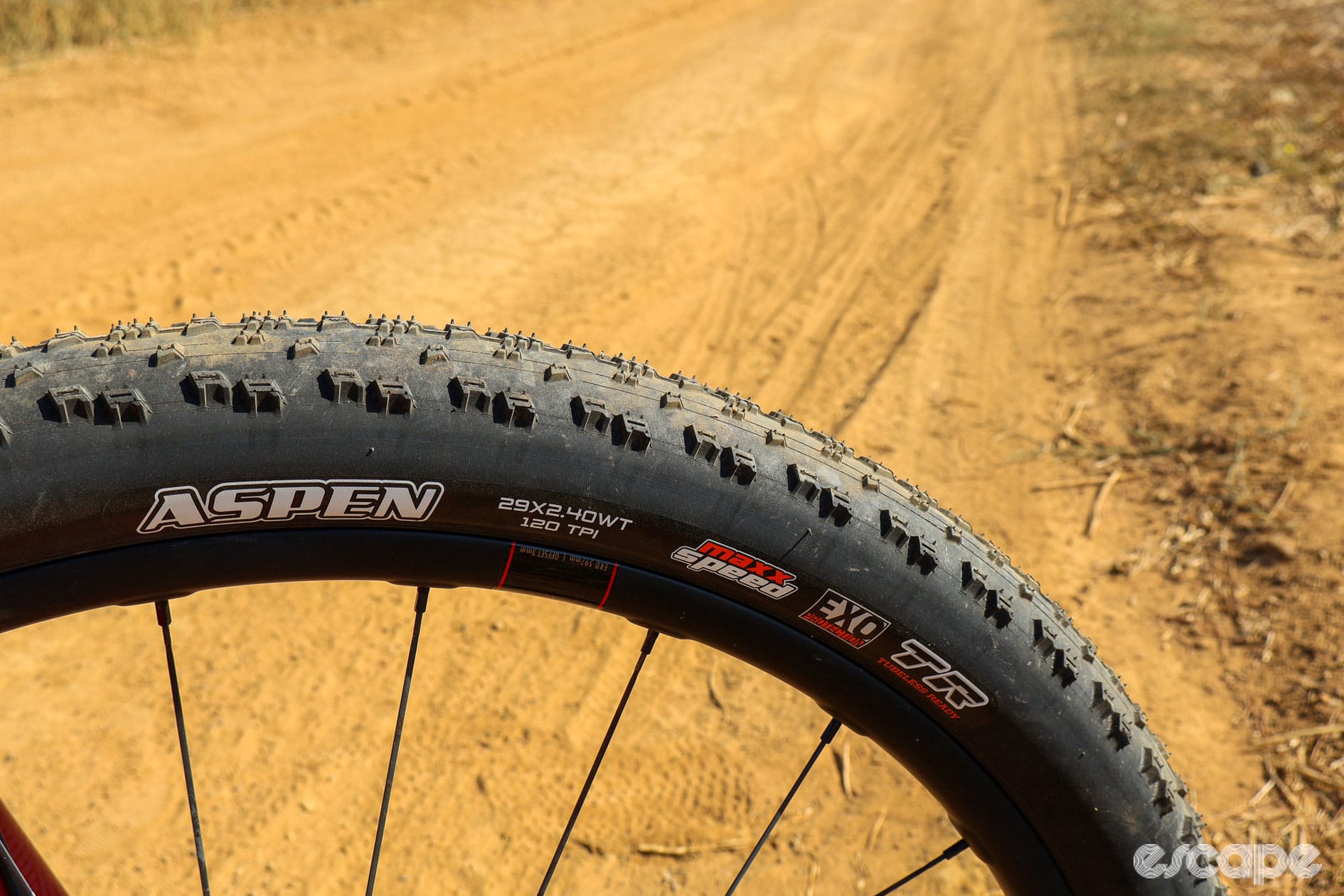
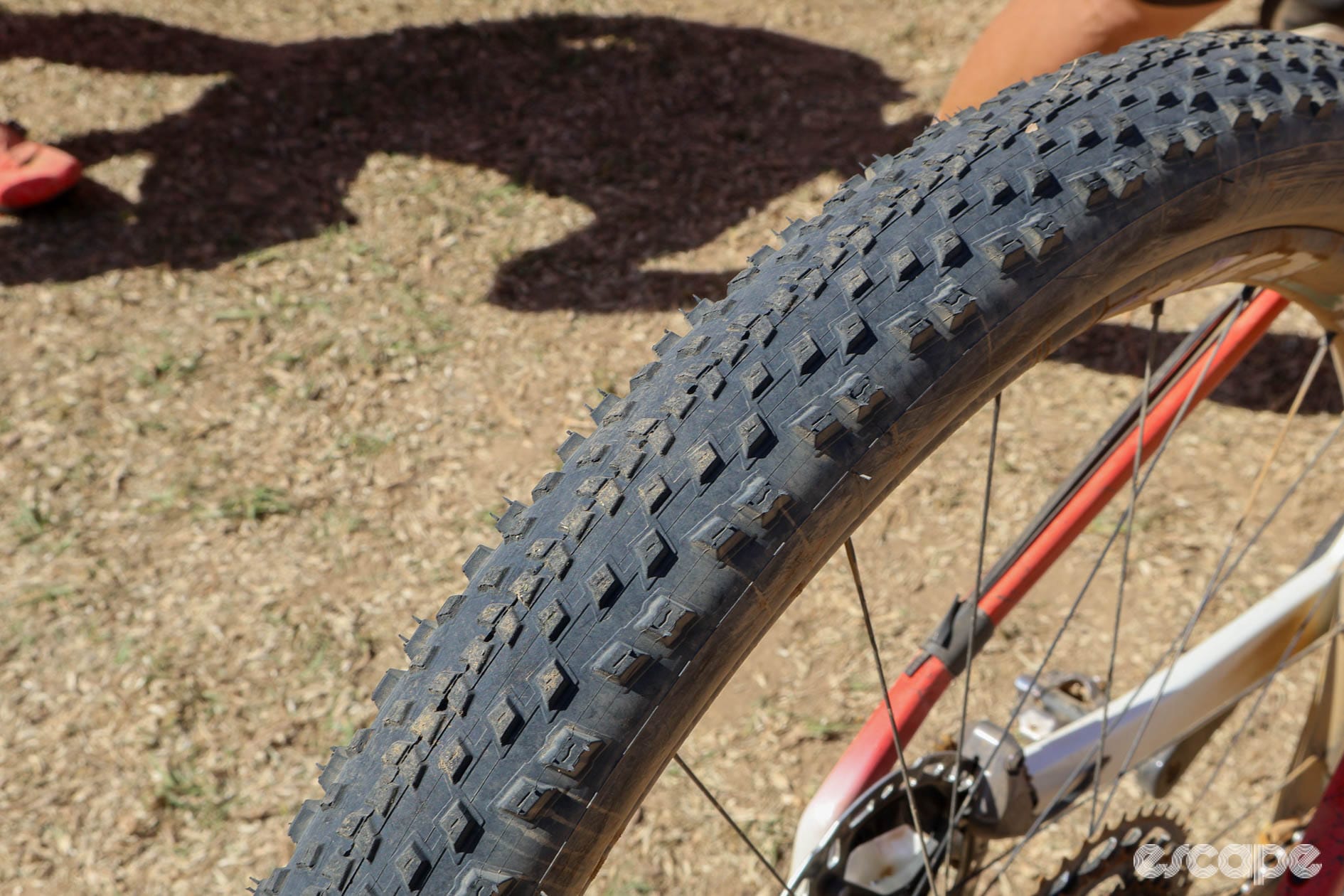
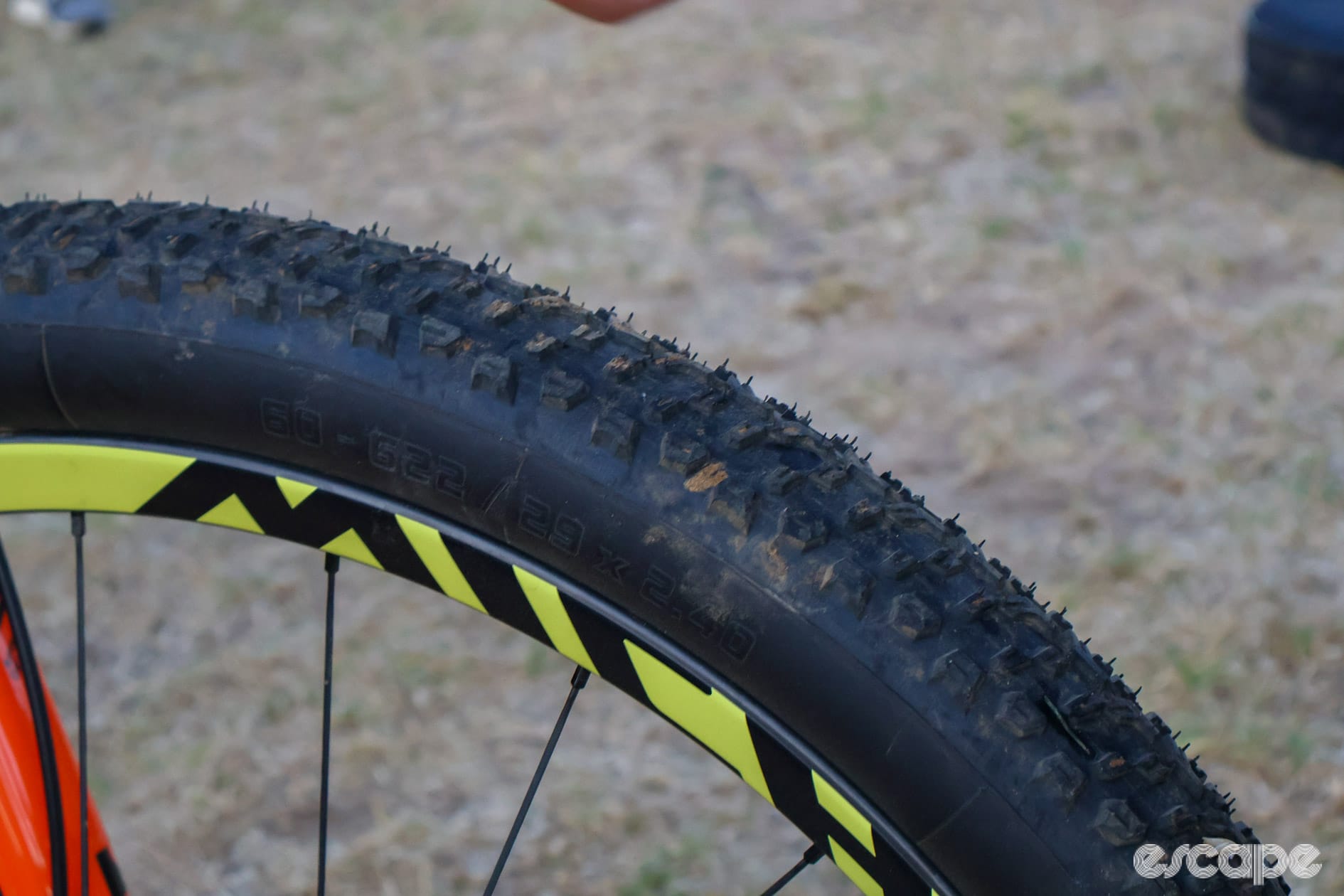
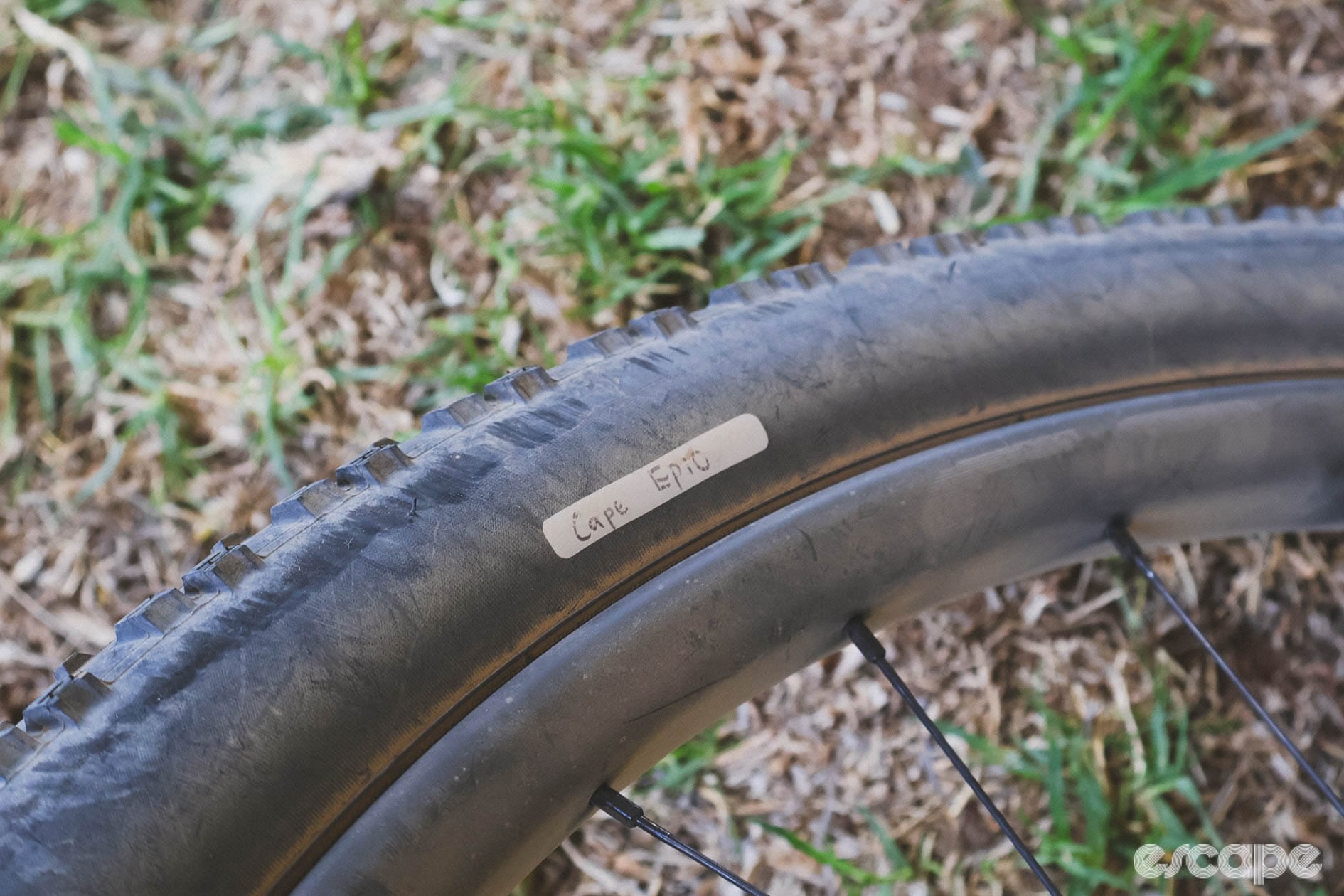
120 mm front suspension is where it’s at
Longer travel bikes were a rare sight not so long ago, but the progression of the genre was on full display and now the 100 mm bike is the rarity. Agreement was almost universal that longer travel – and the control and comfort that comes with it – is the way to go, not just at Cape Epic but year-round for the marathon racing crowd that proliferates this racing field.
Did we do a good job with this story?

